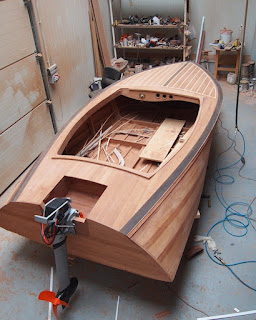Unveiling the Blueprints: Crafting Commercial Wooden Boats
The rhythmic slap of wood against water, the scent of freshly-varnished timber, the timeless elegance of a wooden hull – these are the hallmarks of a tradition that continues to thrive in the world of commercial boating. While modern materials dominate, the enduring strength and beauty of wooden boats remain highly sought after for specific applications, demanding meticulous craftsmanship and expertly-designed blueprints. This article delves into the world of blueprints for commercial wooden boats, exploring their crucial role in building durable, efficient, and aesthetically pleasing vessels.
The Importance of Detailed Blueprints
Constructing a commercial wooden boat is no small undertaking. It requires a significant investment of time, resources, and skill. Detailed blueprints are the cornerstone of this process, acting as a comprehensive guide that dictates every aspect of the build, from the initial keel layout to the final varnish coat. These aren't mere sketches; they are precise, engineered documents incorporating hydrodynamics, structural integrity, and regulatory compliance. A flawed blueprint leads to a flawed vessel, resulting in potentially costly repairs, safety hazards, and ultimately, economic loss. Therefore, securing professionally-drawn blueprints is paramount to success.
Key Elements of Comprehensive Blueprints
Effective blueprints encompass far more than simply a visual representation. They provide detailed specifications crucial for accurate construction. Consider these critical elements:
- Scale Drawings: Precisely scaled drawings of each component, ensuring accurate replication.
- Material Specifications: Clear identification of the type, grade, and quantity of timber required for each section of the boat.
- Joinery Details: Detailed diagrams of all joints, including scarf joints, lap joints, and mortise and tenon joints, illustrating the precise angles and methods of assembly.
- Structural Calculations: Calculations demonstrating the boat's structural integrity, ensuring it can withstand anticipated loads and stresses.
- Hydrostatic Calculations: Data related to buoyancy, stability, and displacement, confirming the boat's seaworthiness.
- Engine and Systems Integration: If the boat is to be powered, blueprints include precise locations and mounting details for engines, fuel tanks, and other onboard systems.
Types of Commercial Wooden Boats and Their Blueprints
The blueprints for commercial wooden boats vary significantly depending on their intended purpose. A fishing trawler will require different considerations than a workboat designed for harbor duties. Each design needs specific attention to factors like weight capacity, maneuverability, and resistance to saltwater corrosion. Here are a few examples:
Fishing Boats
Blueprints for fishing boats prioritize stability, durability, and ample deck space. They often incorporate features like specialized fish holds, powerful engines, and reinforced hulls to withstand the rigors of commercial fishing operations. These designs must also comply with stringent fisheries regulations concerning size and safety equipment.
Workboats
Workboats, used for tasks such as dredging, towing, or transporting cargo, emphasize strength and reliability. Their blueprints reflect this need by incorporating robust structural members and robust systems designed to handle heavy loads. They are often built with a focus on practicality over aesthetics, prioritizing functionality and efficiency.
Passenger Vessels (Smaller Scale)
Even smaller-scale passenger vessels, such as those used for tourist excursions or harbor ferries, benefit from well-designed blueprints. These documents dictate the layout of passenger seating, safety features like life rafts and emergency exits, and compliance with passenger vessel regulations. Safety is paramount in these designs, demanding rigorous adherence to blueprints and careful construction.
Finding and Utilizing Blueprints
Locating suitable blueprints may involve searching through specialized nautical publications, contacting experienced naval architects, or exploring online repositories. Once acquired, the blueprints serve as an invaluable guide throughout the entire construction process. Careful study and understanding of each detail are critical before initiating construction to avoid costly mistakes and ensure the final product meets all intended specifications and regulations. The investment in high-quality blueprints translates directly into a well-built, safe, and ultimately profitable commercial vessel.





